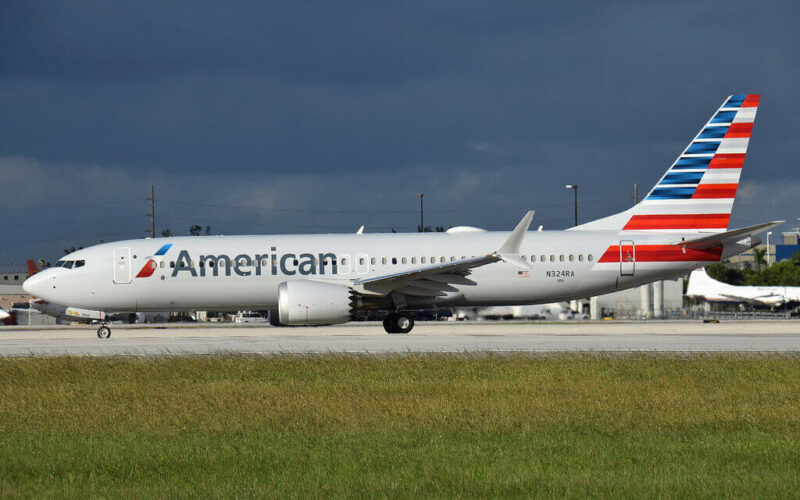Updated on 17/07/2019 12:10 pm (UTC +2) to include United spokesperson’s statement
Top U.S. carrier American Airlines (A1G) (AAL) had already pushed back the date of its Boeing 737 MAX fleet return to service several times. First through July, then August, then September, and now, for the fourth time, through November 2019. United has followed suit by dropping its MAX jets from its schedule for another two months. Southwest is expected to follow their lead by announcing a November deadline as well. Unfortunately, the grounding of MAX planes means flight cancellations, and cancellations translate into millions lost in revenue for airlines operating the type.
American Airlines
In its most recent update on July 14, 2019, American Airlines (A1G) (AAL) announced it is extending cancellations for the MAX through November 2, 2019. The cancellations will result in approximately 115 flights per day being slashed from the airline’s current schedule through the new deadline. But let’s take a look back at the timeline of all the previous cancellations.
Complying with the Federal Aviation Administration’s (FAA) directive to ground all U.S.-registered 737 MAX aircraft, including the -8 and -9 variants, American grounded the 24 MAX 8 planes in its fleet on March 14, 2019. The carrier would on average operate 85 daily flights on its MAX 8 aircraft.
On April 7, 2019, the legacy carrier announced it would extend MAX cancellations through June 5, 2019, resulting in around 90 daily flights being cancelled during the time period based on the airline’s schedule.
A week later, on April 14, American’s Chairman and CEO Doug Parker together with President Robert Isom revealed they would be extending cancellations further, through August 19. That had to result in 115 daily flights, a number that represents around 1.5% of American’s total flights each day scheduled for this summer, cancelled.
Come June 9, and another extension is issued – this time, through September 3, 2019, with 115 daily flights cut. Which leads us to the latest cancellations – through November 2, 2019, which could count as a fifth extension, since an October deadline was previously speculated in the media.
To be fair, American has noted since the very beginning that not all flights previously scheduled on a MAX are being canceled – the airline is substituting other aircraft to cover its busiest routes. However, in July, as CNN reported, American was forced to temporarily suspend a route due to the grounding of the MAX, becoming the first airline to do so. The airline’s direct service between Oakland, California, and its home base at Fort Worth, Dallas, was suspended as of June 28, 2019.
Nevertheless, in its recent announcement, the top U.S. carrier stated it “remains confident” that 737 MAX software updates, as well as “new training elements” that Boeing is developing in coordination with the airline’s union partners, “will lead to recertification of the aircraft this year”.
World’s largest carrier by fleet size, American Airlines (A1G) (AAL) currently operates around 947 aircraft in its mainline fleet. The airline’s Boeing fleet consists of 757, 767, 777, and 787 models, with majority of planes of the 737-800 type. According to Boeing orders and deliveries book (ending June 30, 2019), aside of the 24 737 MAX 8 planes the legacy carrier currently has in its mainline fleet, another 76 orders for the type remain unfilled.
Southwest and United
Although American holds the title of world’s largest carrier, having more planes than any other U.S. airline, it is not the one with the most 737 MAX planes. Budget airline Southwest, which operates an all-Boeing 737 fleet (737-700, 737-800 and the MAX), has had a total of 31 737 MAX 8 jets delivered by Boeing (as of June 30, 2019). Another 249 orders for the MAX remain unfilled, the manufacturer’s log indicates.
Southwest too has extended cancellations of MAX flights several times. In April, the carrier stated flight cuts would go on through August 5; earlier in June, the company announced the cancellations would go on through September 2, 2019, resulting in around 100 daily flights removed from its schedule.
The airline’s latest update, released on June 27, informed that it was extending cancellations through October 1, 2019. This time 150 daily flights stricken out of Southwest’s “total peak-day schedule of more than 4,000 daily flights”. It is expected the Dallas, Texas, based carrier will follow American Airlines’ (A1G) (AAL) lead and push back the date once again until early November, however, such developments have not been announced yet.
As for United, the vast majority of the airline’s fleet also consists of Boeing aircraft (737, 757, 767, 777 and 787 models), the 737 model being the absolute leader. The manufacturer’s log shows the airline has so far taken delivery of 14 737 MAX jets, out of its 137 orders for the type. It has reportedly already dropped the MAX jets from its regular schedule through November 3, 2019.
The airline expects to cancel roughly 1,290 flights in July; August could see the cancellation of around 1,900 flights; September to result in 2,100 cancellations; and October is projected to bring another 2,900 flight cuts. The numbers bring the total count to 8,190 flights cancelled through October 2019.
“We have decided to pull MAX flights out of our schedule until November 3. Moving forward, we’ll continue to monitor the regulatory process and nimbly make the necessary adjustments to our operation and our schedule to benefit our customers who are traveling with us,” a spokesperson for United told AeroTime.
“We are continuing to work through the schedule to try and swap and upgauge aircraft to mitigate the disruption caused by the grounding of the MAX. We continue to automatically book affected customers on alternate flights.”

